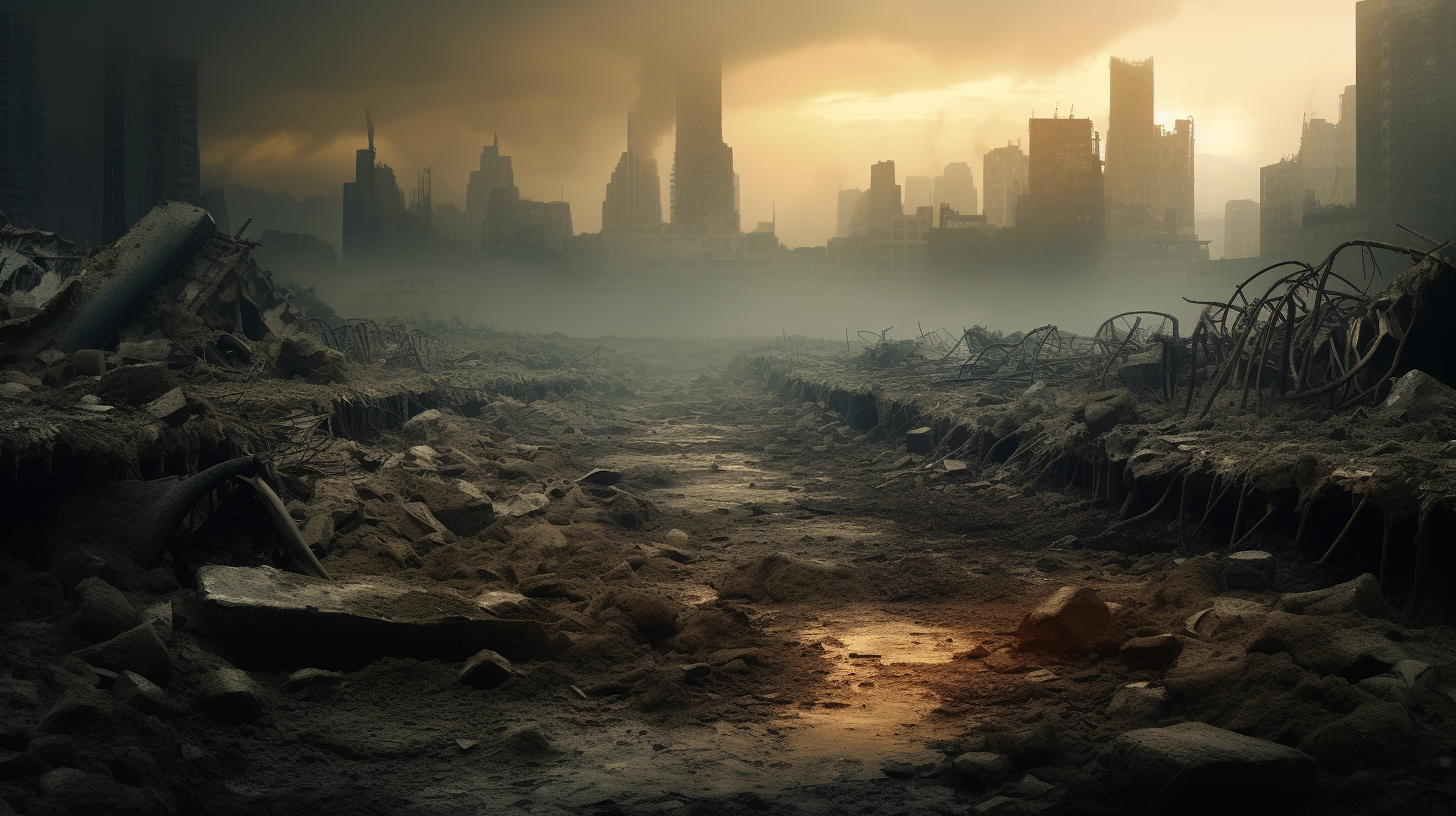The apocalypse isn’t an event we await in the distant future; it’s the grueling daily life of millions as choking dust storms blanket what used to be bustling metropolises. Cities Swallowed by Dust – the phrase is not a relic of dystopian fiction but a headline from the grim ledger of our own reality. Our planet’s insatiable thirst, spawned from environmental misdeeds, is quenched by nothing except the arid breaths of barrenness.
It begins with a whisper of fine grains, dancing devilishly in the once-clear air; by twilight, the whisper turns into a full-throated roar as granules of despair entomb structures in a sandy grave. In this special feature, we pry open the dust-caked windows of our present existence to stare into the abused face of our mother Earth, gasping under the relentless siege of anthropogenic desertification.
The scenes of destitute abandonment are reminiscent of our yesteryears’ Dust Bowl, only magnified in scope and devastation. Skyscrapers stand defiant, their once-reflective glass now a murky canvas for dust to etch its permanence. Below, the infrastructure crumbles, no longer a match for the relentless aggression of nature in revolt. Lush parks and vibrant markets, once symbols of urban vitality, are now the domain of a new kind of wilderness.
In the outskirts, the farmlands suffer a parallel fate. Where green once prevailed, only varying shades of brown and despairing blankness reign. Farm machinery, once the proud champions of modern agriculture, are reduced to relics peering through sand dunes, their productivity a tale told by elders struggling to reconcile with this new world.
But what of the human spirit amidst this desolation? Stories of stoicism and fleeting resilience emerge. Communities forge bonds in the face of adversity, sharing stories of loss over the ever-present hum of gritty breezes. It’s a resilience born from having no other choice – a testament to humanity’s raw grit when faced with existential threats.
Yet, among these narratives of endurance and makeshift survival, an ominous question looms larger than the dust clouds that swallow our sunsets: Will our tale end in a requiem composed by the howling wind, or is there a fragment of hope to be scavenged from this desolation?
The thirst of Earth is a cruel irony – a planet drenched in oceans yet parched to the core, its groundwater reserves plundered with reckless abandon. Our aquifers, which took millennia to fill, have been depleted in a geological blink; the veins of life, once robust, now a fragile network of cracks.
As we chronicle this dystopian landscape, dotted with the husks of civilization, we reflect upon the visceral urgency of action that the situation demands. The relentless march of climate change waits for no one, and while efforts of soil regeneration appear like mere whispers against a cacophonous disaster, they are the defiant chants of an ethos trying to mend the rift between humanity and its cradle.
Though the stories we tell may seem like dispatches from a parallel universe, they are dispatches from our very own. ‘Cities Swallowed by Dust – an echoing dirge for what was, a cautionary tale for what could be, and a morose reflection of what is. As Earth’s thirst remains wretchedly unquenched and the dust continues to rise, one wonders if the age-old hymn of prosperity will ever resound again, or if it shall remain forever muted under the sandy shroud of a green dystopia.
